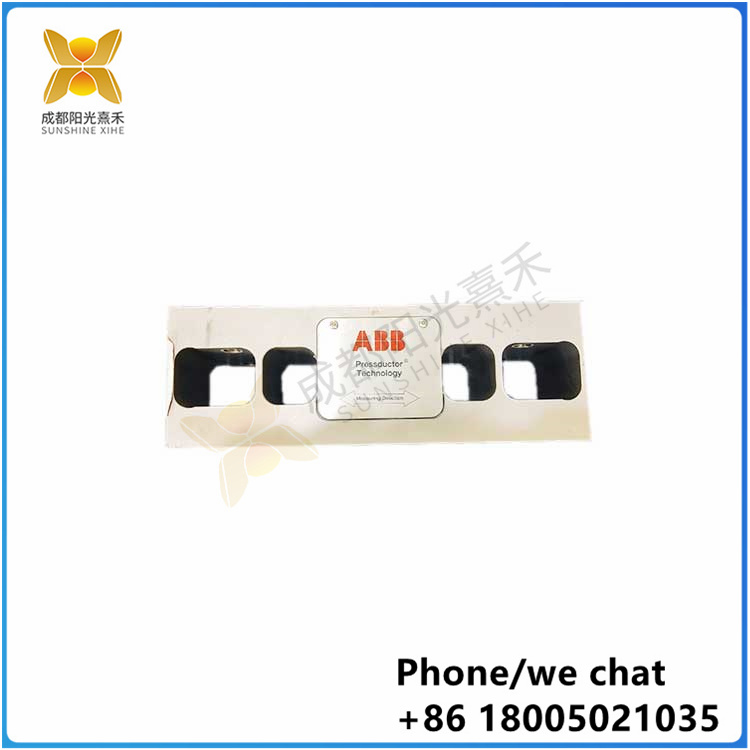Body text:
PFTL101B 20KN 3BSE004203R1, with its innovative design and excellent performance, it has brought revolutionary changes to industrial automation.
Product overview
The PFTL101B 20KN 3BSE004203R1 is a high performance force sensor designed for heavy duty industrial applications.
It can withstand forces of up to 20 kN and is suitable for applications requiring high intensity force measurements.
Technical specification
High load capacity: The sensors are designed to measure forces of up to 20 kN and meet the needs of heavy industrial applications.
High-precision measurement: The use of high-precision sensing technology to ensure the accuracy and repeatability of measurement results.
Stability and durability: Industrial grade materials and design guarantee the stability and durability of the sensor in extreme environments.
Multiple output options: Support a variety of signal output methods, including analog and digital signals, easy to integrate into different control systems.
Easy installation and calibration: Modular design and intuitive operating interface simplify the installation and calibration process.
Application case
Heavy machinery: In lifting machinery and heavy equipment, this sensor is used to monitor and control load forces, ensuring safe and efficient operations.
Material testing: In tensile, compression and fatigue testing of materials, sensors provide accurate force measurements to help evaluate the properties of materials.
Press application: In the process of metal processing and forming, the sensor is used to monitor the working state of the press to ensure the processing quality.
Robotics: In robot force control applications, sensors are used to achieve fine force control, improving operational flexibility and accuracy.
Structural health monitoring: In the health monitoring of large structures such as Bridges and buildings, sensors are used to detect the stress state of the structure and evaluate its safety.
Market response
Since its launch, the PFTL101B 20KN 3BSE004203R1 sensor has received widespread attention and positive comments from industrial customers
around the world. It not only improves the accuracy and reliability of industrial automation, but also provides more innovation possibilities for industrial applications.
Conclusion
The advent of the PFTL101B 20KN 3BSE004203R1 force sensor marks the new progress of industrial sensor technology in force measurement.
We expect this sensor to be widely used worldwide and contribute to the development of industrial automation and intelligent manufacturing.”

PFTL101B 20KN 3BSE004203R1
The PFTL101B 20KN 3BSE004203R1 force sensor has several advantages in practical applications, but also faces some challenges.
Advantages:
High precision measurement: The sensor can provide ±0.1% full scale accuracy to ensure the accuracy of the measurement.
Wide temperature range: Operating temperature range from -20 ° C to 60 ° C, enabling it to adapt to various environmental conditions.
Durability and reliability: Designed to provide stable and reliable performance in a variety of environments.
Powerful feedback capability: Provides accurate and stable position and speed feedback to ensure the reliability of system operation.
Wide range of applications: widely used in industrial control fields, such as pulp and paper industry, gas, water supply, sewage treatment, metallurgy, steel manufacturing and other industries.
Interoperability and flexibility: In the PROFINET network, the stable operation and flexibility of the network are achieved through special Ethernet-APL switches.
Challenge:
Environmental adaptability: While sensors are designed for a wide temperature range, long-term stable operation in extreme temperatures or harsh environments can be challenging.
Integration and compatibility: In some specific industrial automation systems, integration and compatibility with existing systems may require additional adaptations or adjustments.
Cost-effectiveness: As a high-precision sensor, its cost may be higher than that of a standard sensor, and enterprises need to weigh cost against performance.
Technical maintenance: High-precision sensors may require professional technical support and maintenance to ensure their long-term stable operation.






